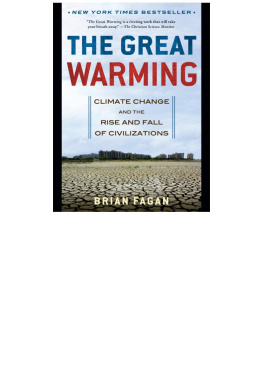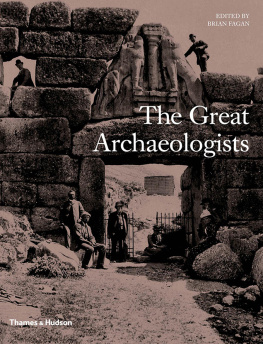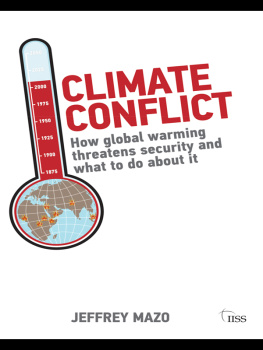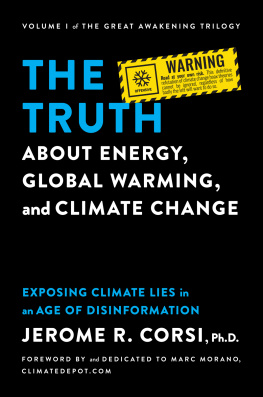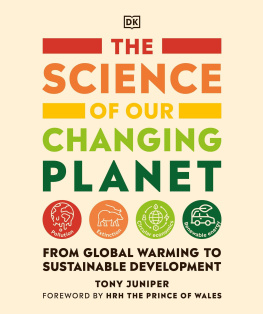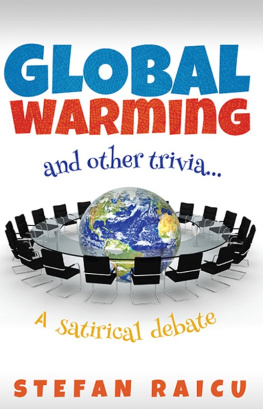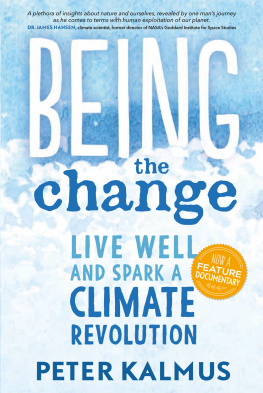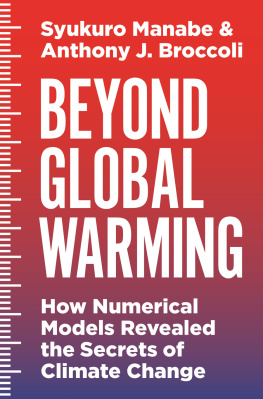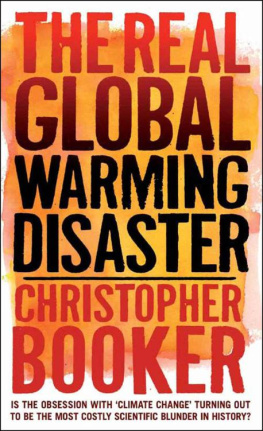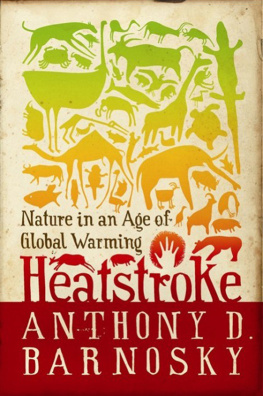Fagan - The great warming: climate change and the rise and fall of civilizations
Here you can read online Fagan - The great warming: climate change and the rise and fall of civilizations full text of the book (entire story) in english for free. Download pdf and epub, get meaning, cover and reviews about this ebook. City: New York, year: 2008, publisher: Bloomsbury Press;Bloomsbury Publishing Plc, genre: Romance novel. Description of the work, (preface) as well as reviews are available. Best literature library LitArk.com created for fans of good reading and offers a wide selection of genres:
Romance novel
Science fiction
Adventure
Detective
Science
History
Home and family
Prose
Art
Politics
Computer
Non-fiction
Religion
Business
Children
Humor
Choose a favorite category and find really read worthwhile books. Enjoy immersion in the world of imagination, feel the emotions of the characters or learn something new for yourself, make an fascinating discovery.
- Book:The great warming: climate change and the rise and fall of civilizations
- Author:
- Publisher:Bloomsbury Press;Bloomsbury Publishing Plc
- Genre:
- Year:2008
- City:New York
- Rating:4 / 5
- Favourites:Add to favourites
- Your mark:
The great warming: climate change and the rise and fall of civilizations: summary, description and annotation
We offer to read an annotation, description, summary or preface (depends on what the author of the book "The great warming: climate change and the rise and fall of civilizations" wrote himself). If you haven't found the necessary information about the book — write in the comments, we will try to find it.
From the tenth to the fifteenth centuries the earth experienced a rise in surface temperature that changed climate worldwidea preview of todays global warming. In some areas, including Western Europe, longer summers brought bountiful harvests and population growth that led to cultural flowering. In the Arctic, Inuit and Norse sailors made cultural connections across thousands of miles as they traded precious iron goods. Polynesian sailors, riding new wind patterns, were able to settle the remotest islands on earth. But in many parts of the world, the warm centuries brought drought and famine. Elaborate societies in western and central America collapsed, and the vast building complexes of Chaco Canyon and the Mayan Yucatan were left empty.
As he did in his bestsellingThe Little Ice Age, anthropologist and historian Brian Fagan reveals how subtle changes in the environment had far-reaching effects on human life, in a narrative that sweeps from the Arctic ice cap to the Sahara to the Indian Ocean. The history of the Great Warming of a half millennium ago suggests that we may yet be underestimating the power of climate change to disrupt our lives todayand our vulnerability to drought, writes Fagan, is the silent elephant in the room.
Learn more atwww.brianfagan.com.
Brian Fagan discussesThe Great Warmingon The Daily Show with John Stewart.
PRAISE forThe Great Warming:
This is not only World History at its best, sweeping across all of humankind with a coherent vision, but also a feat of imagination and massive research. If Fagan has given the medieval period throughout the globe a new dimension, he has at the same time issued an irrefutable warning about climate change that is deeply troubling.Theodore Rabb, author ofThe Last Days of the Renaissance
Climate has been making history for a very long time, though historians have rarely paid much attention to it. But as it turns out, a few less inches of rain, a change in temperature of just a degree or two can make all the difference in how human events unfold.The Great Warmingdemonstrates that although human beings make history, they very definitely do not make it under circumstances of their own choosing.Ted Steinberg, author ofDown to Earth: Natures Role in American HistoryandAmerican Green: The Obsessive Quest for the Perfect Lawn
Fagan: author's other books
Who wrote The great warming: climate change and the rise and fall of civilizations? Find out the surname, the name of the author of the book and a list of all author's works by series.

